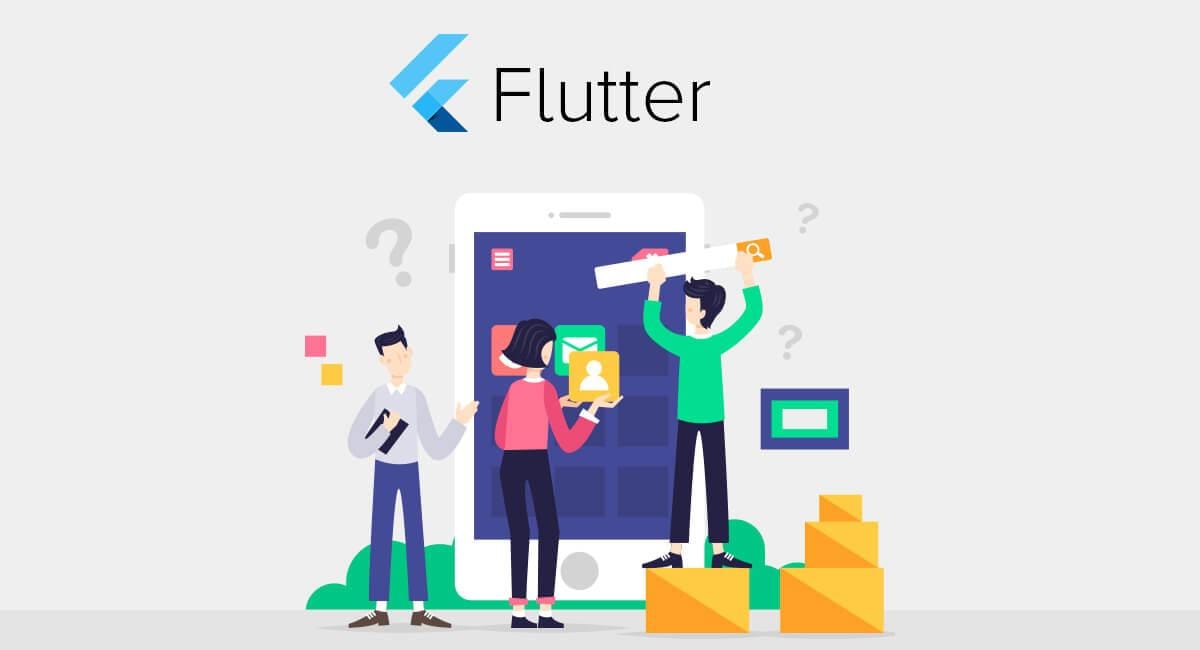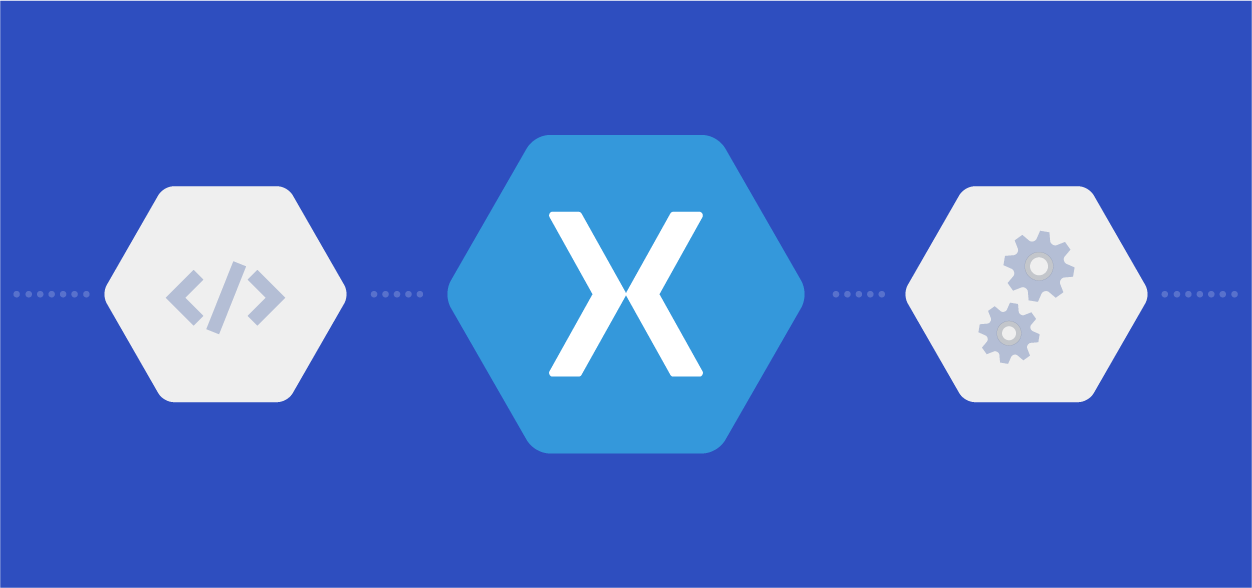What is Flutter ?
Flutter is Google’s framework for cross-platform development. It, therefore, makes it possible to develop an application only once for the different platforms: iOS and Android. Flutter builds on the DART programming language (originally called Dash), also created by Google.

Flutter is an open-source project developed by Google. It is based on the DART programming language, launched in 2011. Flutter is a framework capable of doing cross-platform development. Flutter is the framework everyone is talking about, but why? While we have advised purely native developments for a long time, failing to have satisfactory results with cross-platform developments, Flutter is reshuffling the cards. What does it bring to succeed in blowing a new wind in the world of mobile development?
What particularities ?
Flutter has 2 main specificities:
Widgets: They allow you to simply describe the final rendering. Each object is defined independently of the parent constraints. It is its location in the code that will define its external constraints. This allows you to easily build its interface; the code is then more easily readable and maintainable.
The components: They have been recreated by Google. Developers have a gallery of components that adapt to IOS like Android, and to different versions of OS.
Thanks to the Hot Reload functionality of the DART language, the build of applications is very fast, which makes compilation time almost invisible. Another time-saver for developers! The advantages are therefore numerous, but there are also disadvantages. Here is the list of advantages of whether your project is ready to use Flutter?
Is the enthusiasm for the new Flutter technology justified? What are the strengths of this new framework? We have always preferred to opt for native development for quality mobile applications rather than multi-platforms. Is Flutter changing the game?
Let’s explore its strengths and the benefit Flutter represents for developers and future mobile application projects.
In other words, with Flutter, you are developing a single application that will work on both iOS and Android platforms. The design of the app is the same whether you are on an iOS or Android device. To do this, Flutter app development provides its own Widgets which represent iOS and Android graphic elements.
1 – UX: very good performances, close to the native Flutter, offers a common code that works on both iOS and Android. There are no restrictions, you can imagine almost anything, do everything.
2 – An advantageous framework for developers, Flutter allows, for example, to reload the page automatically without any particular action is necessary. This reloading of code is very appreciated by the developers because it makes it possible to simplify debugging.
3 – The design concept considerably simplified With Flutter, it’s much easier to integrate animations into mobile apps. A wide range of Material components is available. Material Design is a visual language offered by Google intended for mobile first applications with a Flat Design approach. There are very few limitations, it is practically possible to do everything.
4 – Accelerated and optimized maintenance Bug fixes are quick and regular. Even older versions of OS are supported, from iOS 8 and + and from Android 4.1 and + Build your Flutter team with us. Partner in offshore IT development, Expert in providing offshore IT services for 6 years, we use the agile method to manage our client’s projects.
What is Xamarin ?
The start-up Xamarin founded in 2011 had quickly been talked about. The founders of Xamarin aimed to create a language capable of simplifying the development of mobile and office applications. In this article, we are going to see what the Xamarin language is, how it works and what are its advantages over other application development languages.

First, you should know that the applications available on iOS, Android or Windows are distinct and require specific development, which necessarily leads to very high costs. It was necessary to have an iOS/macOS development team, another Windows development team and yet a final Android development team, at best. Small businesses, on the other hand, were forced to focus on a single market, the three simultaneous developments being impossible financially.
The Xamarin project (which is the successor to the Mono project) was therefore born with the ambition of grouping all these developments into one, around a language, C #. A fairly ambitious and revolutionary project that they managed to carry out! In February 2016, five years after the start-up of the startup, Microsoft decided to take out its checkbook to acquire Xamarin and add a new conquest to its technology portfolio. In March 2016, Microsoft announces that it will make Xamarin available for free to Visual Studio users. Since that date, Microsoft has organized conferences to inform the public about the new language. They are also expanding their tutorial database to help new developers who are intrigued by this language.
Recently, there have even been videos of presentations in the form of mini-courses available on the Visual Studio YouTube channel. I invite you to consult them, they are very interesting.
The advantages of Xamarin ?
The first obvious benefit is saving time and money. With this solution, Xamarin proposes to drastically reduce the development time for an application intended to be published on several operating systems. No more need for two very expensive teams who have to communicate and learn to work together.
Thanks to Xamarin, companies will need more than a team which will certainly have to know the specifics of each platform, but will only have to learn one programming language. Xamarin also allows you to consume JAVA libraries or Objective-C / Swift libraries so that you don’t have to rewrite them all for Xamarin. To avoid redeploying the user interface of your applications (iOS, Android, and Windows) Xamarin development has implemented a system allowing direct coding of a user interface with a single code. This tool is called Xamarin. Forms, it allows from the XAML code to produce a user interface compatible with the three platforms. Xamarin. Forms also allow you to create a specific user interface for each platform, for example, an Android interface coded with Xamarin. Form will have the look of an Android application, similar to iOS and Windows.
A personal advantage only this time, the fact that the common language is C # is a real plus!
What is React Native ?
Developing a mobile application requires making a certain number of choices such as the operating system to target and especially the framework on which we will work. We can opt for classic languages such as Swift for iOS or Java / Kotlin for Android as we can opt for a multiplatform solution, a single technology to target both platforms at the same time, such as React Native.

What is React Native ?
It remains to be seen if this is really an interesting alternative, why has React Native become so popular, and does it deserve the trust that is placed in it?
React Native is a framework that allows you to build native applications in JavaScript on iOS and Android, reusing the native components of the platform. Developed by Facebook teams, and shared under a BSD license in 2015, it allows the creation of multiplatform mobile applications. Benefits One of the big advantages of React Native is undoubtedly the saving of time and considerable effort that it allows, because, as you will have understood, the developer of the application does not have to master specific languages to iOS & Android and spend twice as much time building the app. They made it their famous slogan: “Learn once, write anywhere!” Another strong point is the speed of learning. Indeed, it is estimated that it takes about a month to familiarize yourself and master the React tools, where it will take years to master a framework for a native application. React Native provides you with consistent development tools based on JavaScript and allows you to tap into the React library full of free resources, which will significantly reduce the cost of your application and increase the speed of its development.
Another advantage is the applicability and the possibility of integrating React Native into an existing IOS application.
